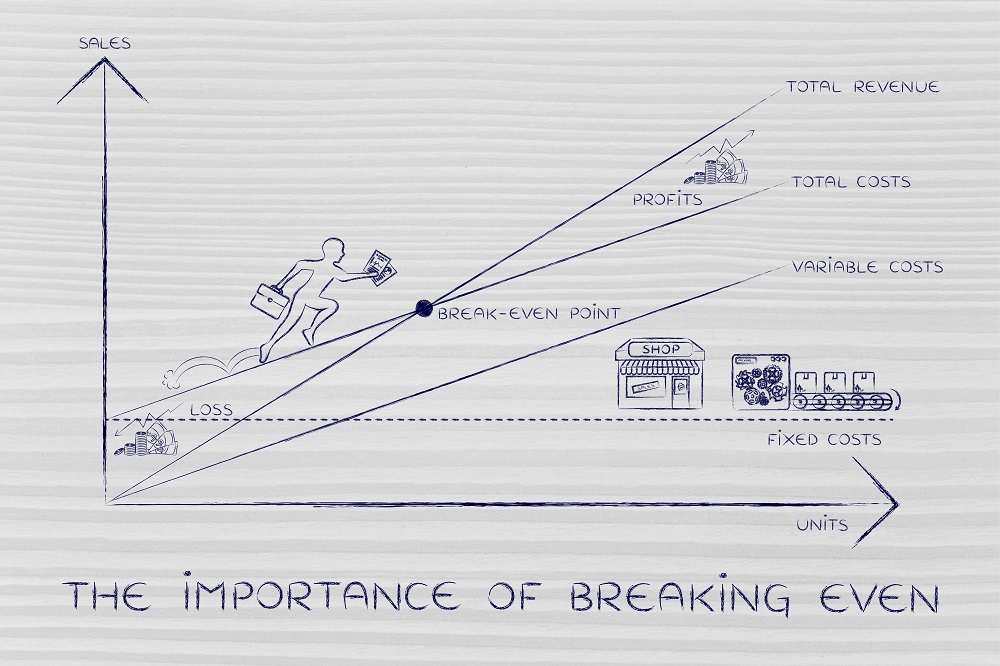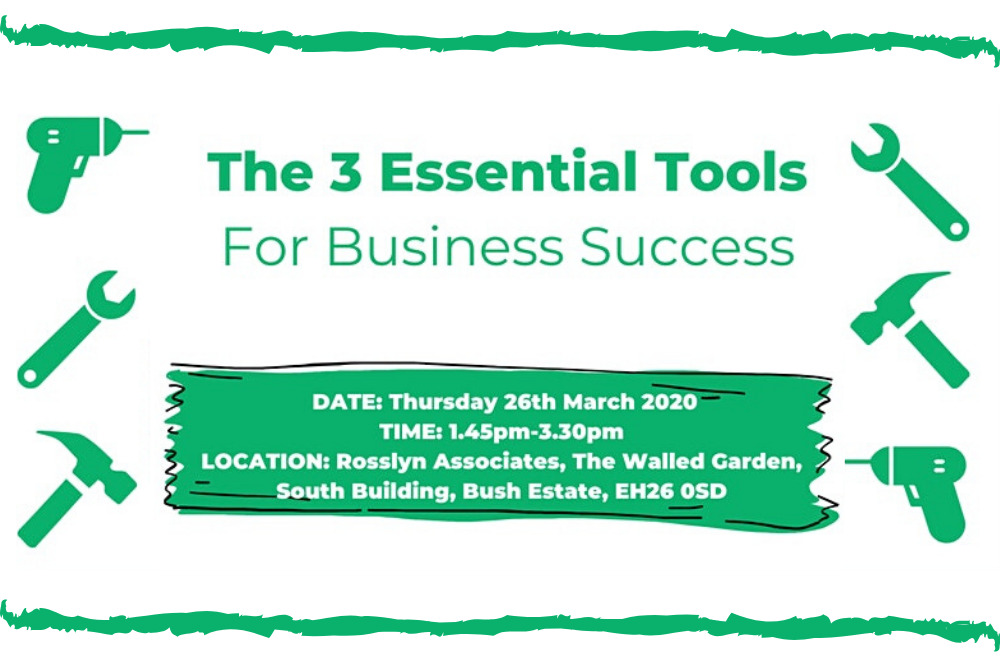
What is the break-even point and why is it important?
It is important to pay attention to your business’ break-even point. Here we’ll explain how to work out your breakeven point and why it’s such an important thing to keep an eye on. If you know what you have to do to break even, then you know what you have to do for your business to survive, and furthermore, what you can do to succeed and make a profit.
What is breaking even?
Breaking even is when a business’ net income is zero and income is equal to outgoings. When a business breaks even, it is the first positive sign of potential for making a decent profit. When a business first starts out, its outgoings are almost always much higher than any income from sales. This is usually due to a lot of initial costs like renovating premises, advertising, developing a website etc. Until your business becomes better known, it can take some time to bring in a steady stream clients/customers. A business has to reach its breakeven point for it to ever be profitable. Unless your business consistently has income higher than its outgoings, it will never be self-sufficient.
How do you work out your break-even point?
To work out your businesses break-even point you need to take note of the services/products your business provides, how much you sell them for, and the different expenses relating to them. Every business has fixed expenses and variable expenses, which are both important when working out your business’ break-even point.
Let’s say you’re a heating engineer (although the same principles apply to most trades.) You are selling a product and a service (The boiler etc. and the installation).
Each job you sell will have expenses that relate to the purchase and the installation.
Let’s say you install a new heating system for £10,000 (we’ll keep the numbers simple to make the point more clearly).
The materials you bought for that one installation cost you £3,000. That is a direct variable cost. This is because the cost of materials will go up the more jobs you do.
Other expense related to the job include the rent of your premises and the leases on your vans. These are fixed expenses. Unless your business grows to a size where your premises are no longer big enough, or you need more vans, it doesn’t matter how many jobs you do, the rent and the van lease payments will still cost the same.
The wages paid to the engineers you employ are sometimes treated as variable direct costs (especially if you use mainly subcontractors) and sometimes as fixed costs, as they are usually fairly constant throughout the year.
In this example we’ll treat them as fixed costs as that’s the most common situation.
In order to work out your breakeven point, you have to add up all of your fixed costs and divide them by your average job invoice value LESS your average materials cost on each job.
Let’s look at the example of the heating engineering business in more detail:
Fixed costs in the year:
Premises rent: £24,000
Rates: £6,000
Insurance: £3,000
Van cost: £30,000
Wages: £100,000
Other costs: £47,000
TOTAL: £210,000
Variable costs per job:
Materials: £3,000
TOTAL: £3,000
Your breakeven point is FIXED COSTS/(AVERAGE JOB VALUE-AVERAGE VARIABLE COSTS)
210,000/(10,000-3000)= 30
So, this means that you need to do 30 installations at £10,000 average value in the year to breakeven. Also your average material cost per job must not exceed £3,000.
In reality, not all jobs are the same and they will likely vary in invoice value and material costs. So in addition to measuring the number of jobs completed, it is also useful to measure the GROSS PROFIT. This is the difference between the sales invoice value and the material costs.
In the example your sales for the year need to be £300,000 (30 x £10,000) and your direct costs need to be £90,000 (30 x £3,000)
Your financial break-even point is when your gross profit equals your fixed costs.
In the example above, the gross profit for the year is £210,000 (£300,000 – £90,000) which equals the fixed costs. In practice it’s advisable to divide your annual figures into monthly targets and check each month that you’ve hit these targets.
In the example, this would mean monthly sales of £25,000 with monthly material costs of £7,500. Any variance from these figures would mean that action might be necessary to keep on track.
Why is it important to know your businesses break-even point?
If you want to move premises, buy a new computer, employ a new member of staff, or you are thinking about spending money on anything else, knowing your break-even point can help you make decisions. You may be unsure of whether you can afford to make a purchase, but now you know exactly how much more of your product or service you will need to sell to break-even and continue heading in the right direction. Knowing your break-even point also means you know how much more you will need to sell to make a profit, and if you are really struggling, it can help you determine where you can cut costs in order to keep your business afloat.
Looking back at the heating engineer example again, now that you know your break-even point, you also know that:
- If you do fewer than 30 installations (at £10,000 with £3,000 material costs), you will make a loss, and if this continues, you’ll eventually go bust.
- If you do exactly 30 installations (at £10,000 with £3,000 material costs) every year, your business can continue surviving, but you will never make a profit.
- If you do more than 30 installations (at £10,000 with £3,000 material costs), you will make £7,000 profit on average for every installation.
This information is essential for your businesses financial planning, as without it you won’t know what your sales targets should be, and you won’t know whether you need additional finance to fund your growth.
What can you do to reach your business’ break-even point?
One example of something you can do to get your business on its way to breaking even, is avoid discounting. Why? Because your break-even point will go up. If you have already calculated your break-even point based on each job being worth £10,000 and you decide you to discount your product to £9,000 then you will need to do five more jobs each year to break-even (210,000/(9,000-3,000)=35). Other ways to get closer to breaking even are to minimise expenses, focus on selling products and services with a high gross margin, try to increase sales from existing customers.
On the other hand, if you can increase your prices to £11,000 average job value, then the number of jobs you need to do each year reduces to just over 26 (210,000/(11,000-3,000).
How Rosslyn Associates can help your business more than break even!
Hopefully you can see that regular measuring and reporting of average job value and average material costs, for example, is needed to see if you are on track. This has been a brief overview of what it means to break-even and why it is important. If you are looking to grow your business, then look no further. Rosslyn Associates’ business development services will help you understand and get exactly what you want out of your business, whether that’s more free time, more money or less stress. Give us a call on 0131 445 1825 or email info@rosslynassociates.co.uk and we can have a chat about how we can help you.
We also host free monthly business development webinars
Check out our events page here to see when our next event is. Join us to learn more about how to plan, develop, and grow your business, so that your business can give you the lifestyle you want.





